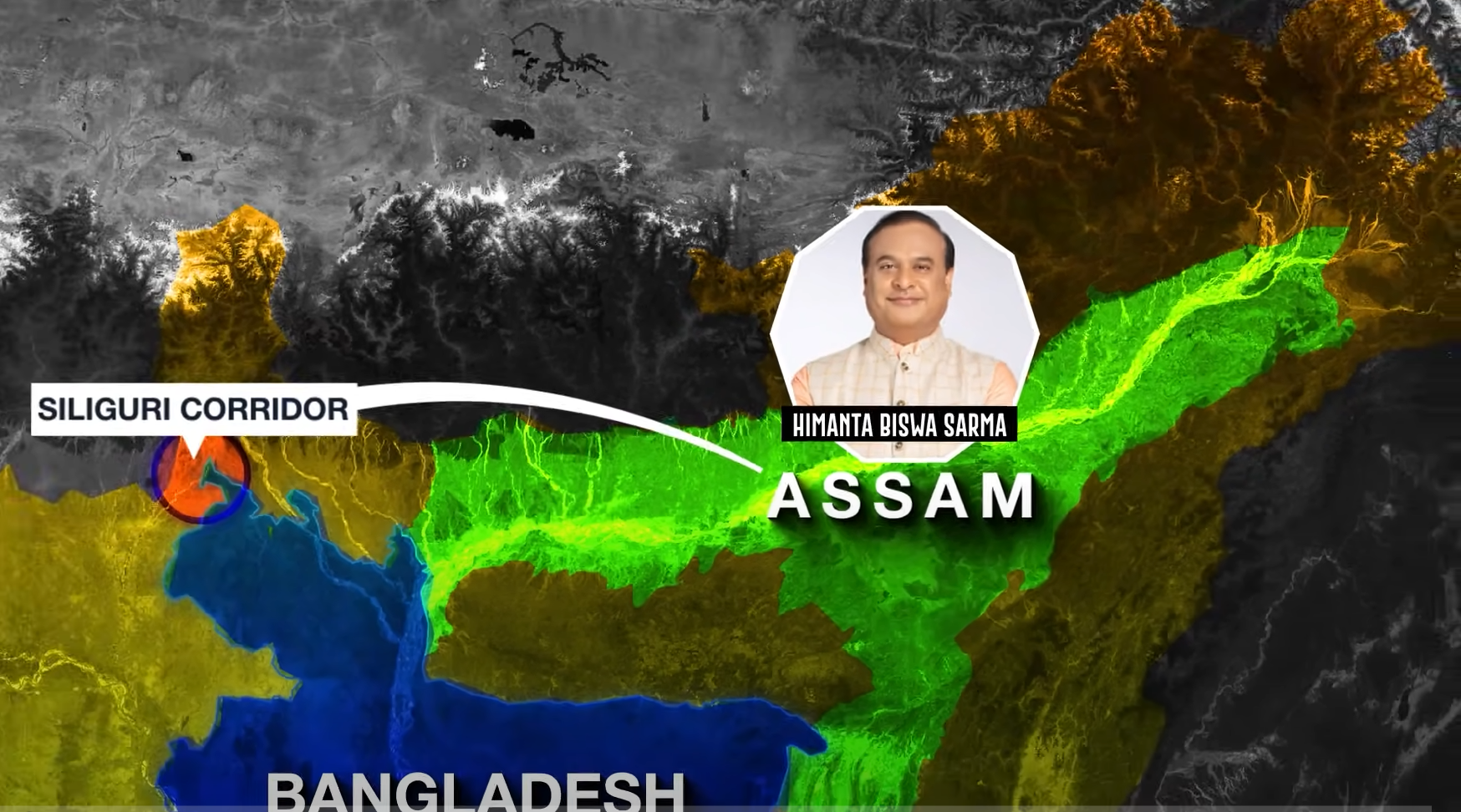India can attack Bangladesh’s Chicken’s Necks
The way the Chief Minister of Assam gave a warning to Bangladesh. He said, ‘You talk about the Chicken’s Neck, but you have two Chicken’s Necks yourself. Imagine what would happen if we attack them.’ This warning from the Assam Chief Minister is historic. I’ve never seen an Indian chief minister speak about a foreign country in this manner before.

In the last few weeks, first we saw reports that Chinese officials have reached the Siliguri Corridor. China wants to revive a World War II-era air force base in Bangladesh. Obviously, this is a major threat to India. Greater Bangladesh is becoming a very common idea among youth in Bangladeshi universities like Dhaka University.
We also saw that a military officer close to Mohammad Yunus posted online that if India attacks Pakistan — this was during Operation Sindoor — then Bangladesh would attack the Northeast, particularly the Siliguri Corridor. The post even said they would wait for China’s signal and would launch a three-front war against India along with China.
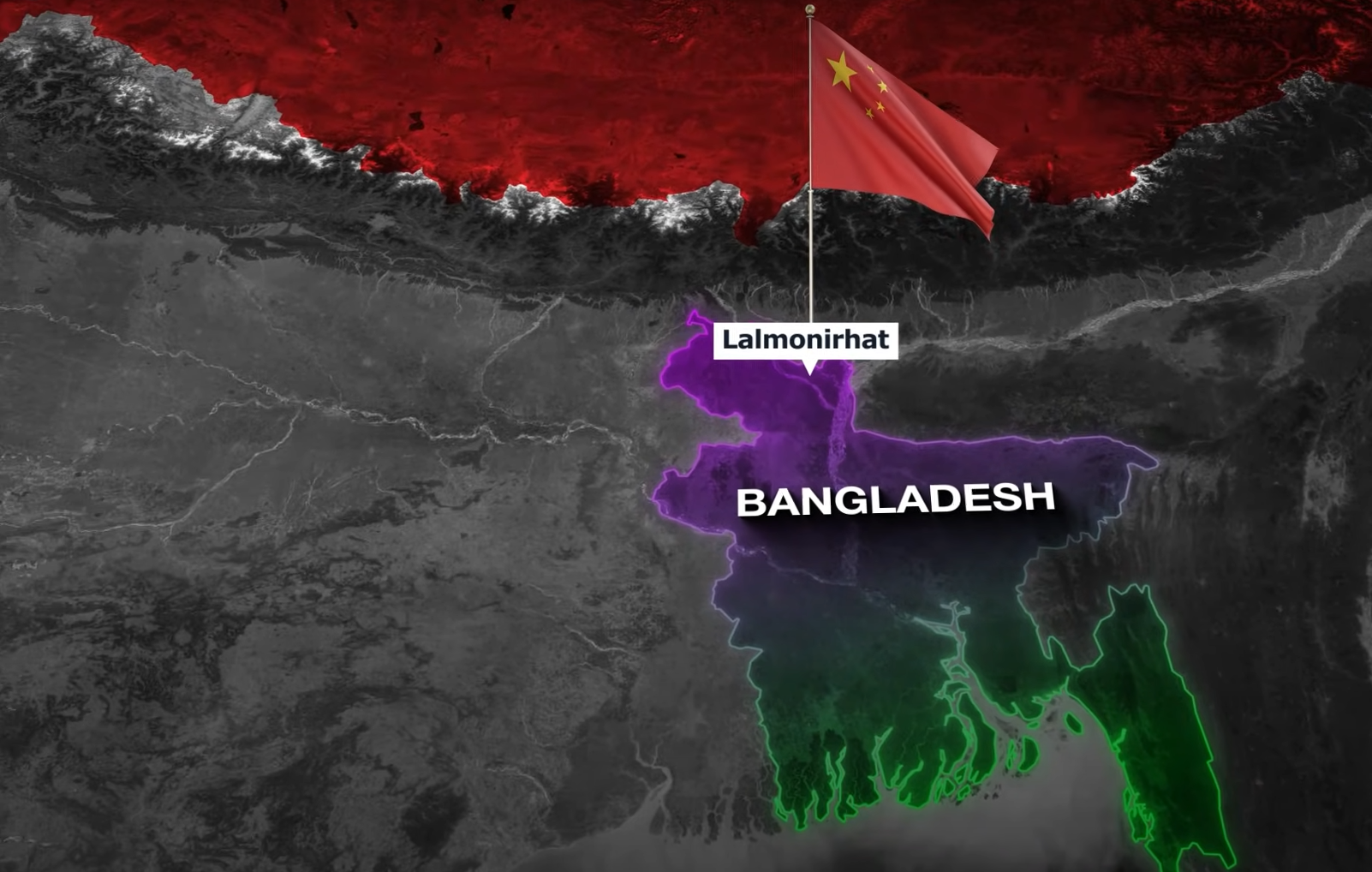
These things were noticed not just by you and me, but also by the chief ministers of India’s northeastern states and the Indian government. There’s a limit to how long India can keep listening to such threats. Eventually, a response had to come from India.
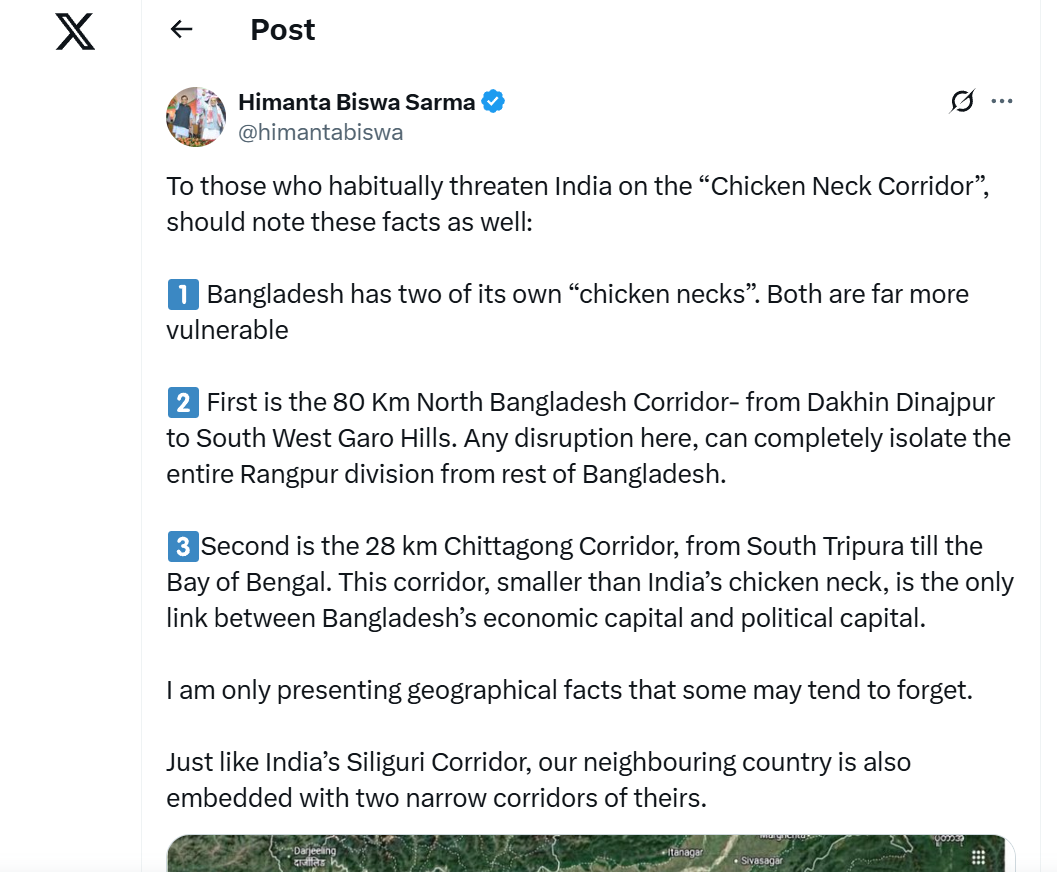
He said something along the lines of: “India has one Chicken’s Neck, but Bangladesh has two. If we attack those two, what would happen? One is near Meghalaya, the other near Chittagong Port.” The CM’s message was clear: India is far more powerful, and Bangladesh should not overestimate itself. He added that India doesn’t even need to bring in nuclear weapons — our conventional strength alone is more than enough.
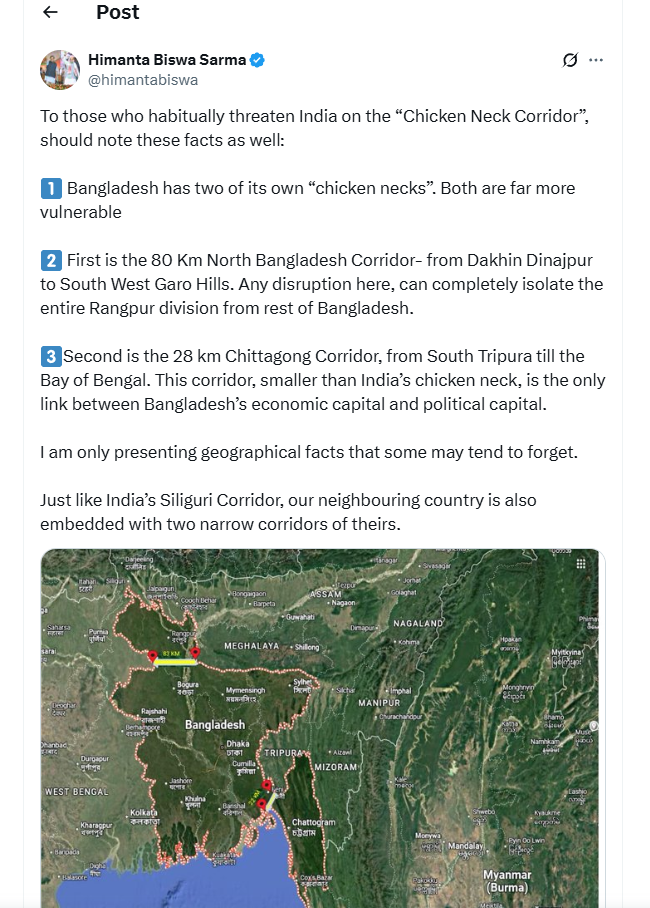
This was a strong statement from Himanta Biswa Sarma. For a while, it felt like Bangladesh would keep making bold statements, and India wouldn’t respond. But India did respond, carefully and without threats of nuclear war. India is a massive country. Bangladesh is a small one. But no country should get the impression that they can take over the Siliguri Corridor.
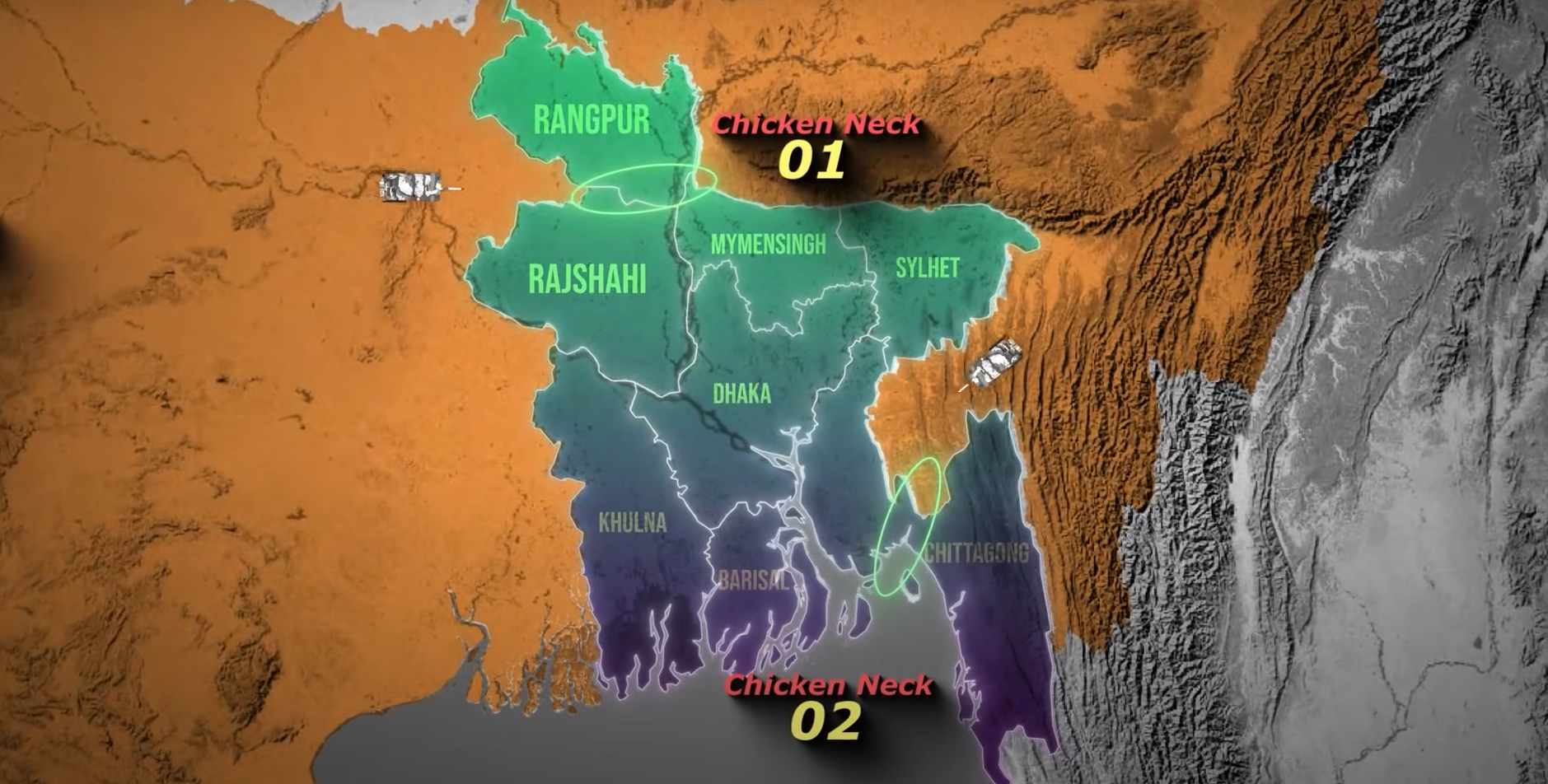
The world saw India’s military power during Operation Sindoor. India isn’t saying this out of pride — even from a logical and neutral perspective, the precision with which India attacked Pakistani air bases was unprecedented. For the first time in history, a nuclear-armed nation like Pakistan had so many of its airbases destroyed. Their air defense systems were rendered useless. And now reports are emerging that India’s S-400 air defense system even shot down Pakistani electronic warfare planes deep inside Pakistani territory—almost 300 km in.
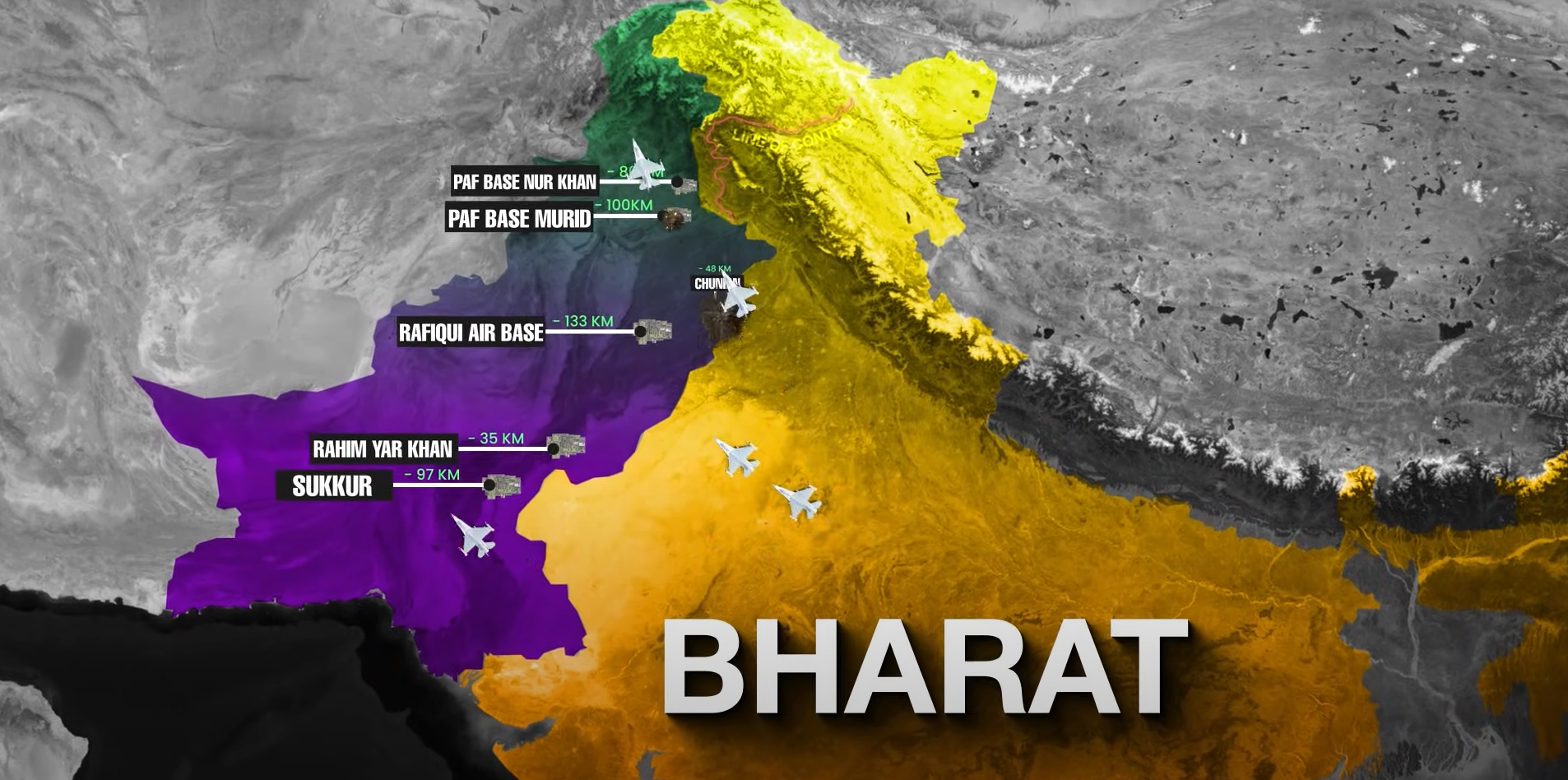
The world will slowly start to realize the extent of Pakistan’s loss. Satellite images alone are impressive enough. Pakistan tried to attack the Golden Temple — they failed. They launched a missile at Delhi — failed. They resorted to artillery shelling at the border — fine, but it showed their level. When it comes to high-tech warfare — missiles, drones, and air defense — India has brutally overpowered Pakistan.
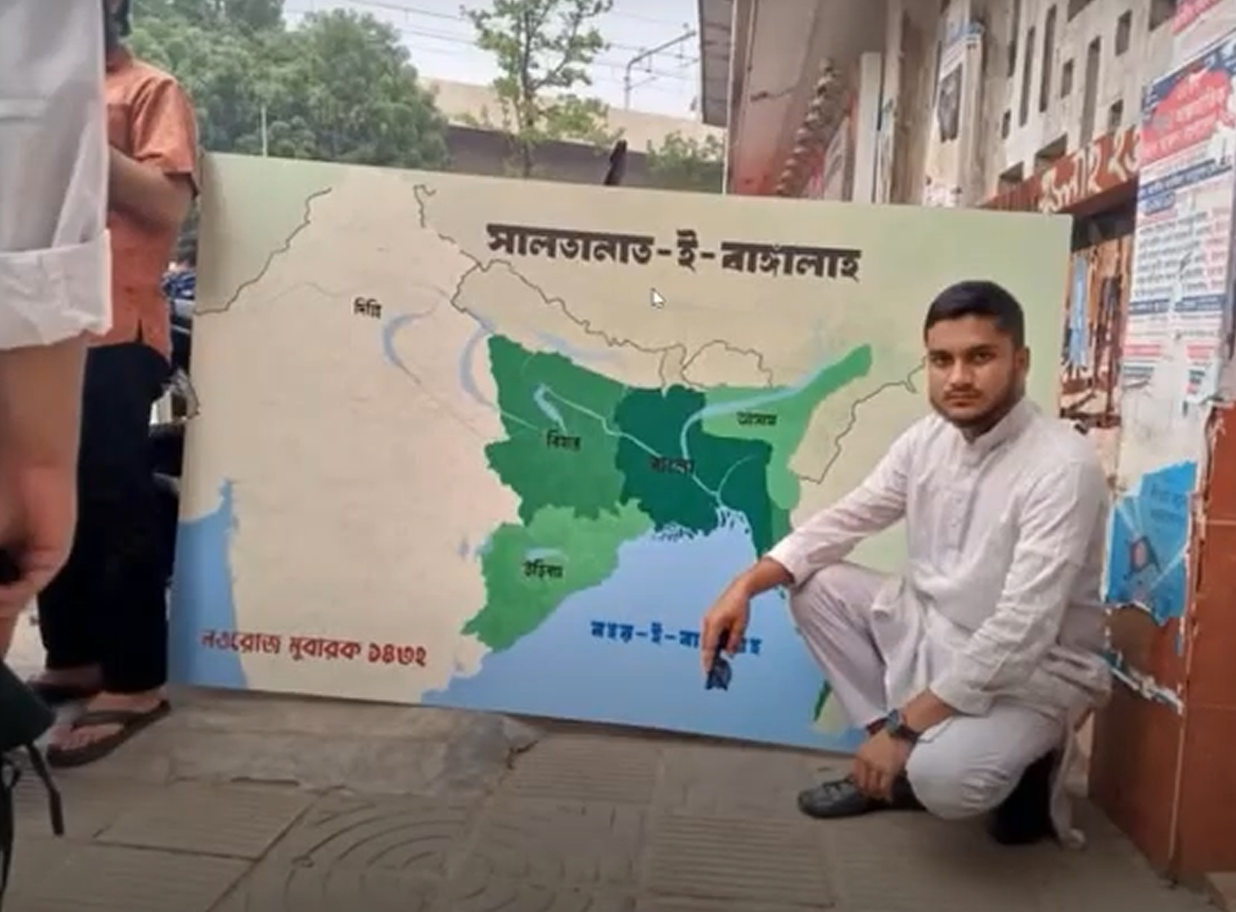
So the dreams of ‘Greater Bangladesh’ that some in Bangladesh were entertaining—80% of their enthusiasm must have already vanished. And for the rest who are still dreaming of a Chicken’s Neck operation or a three-front/four-front war along with China and Pakistan — they should keep in mind that Bangladesh has more vulnerable Chicken’s Necks than India does.
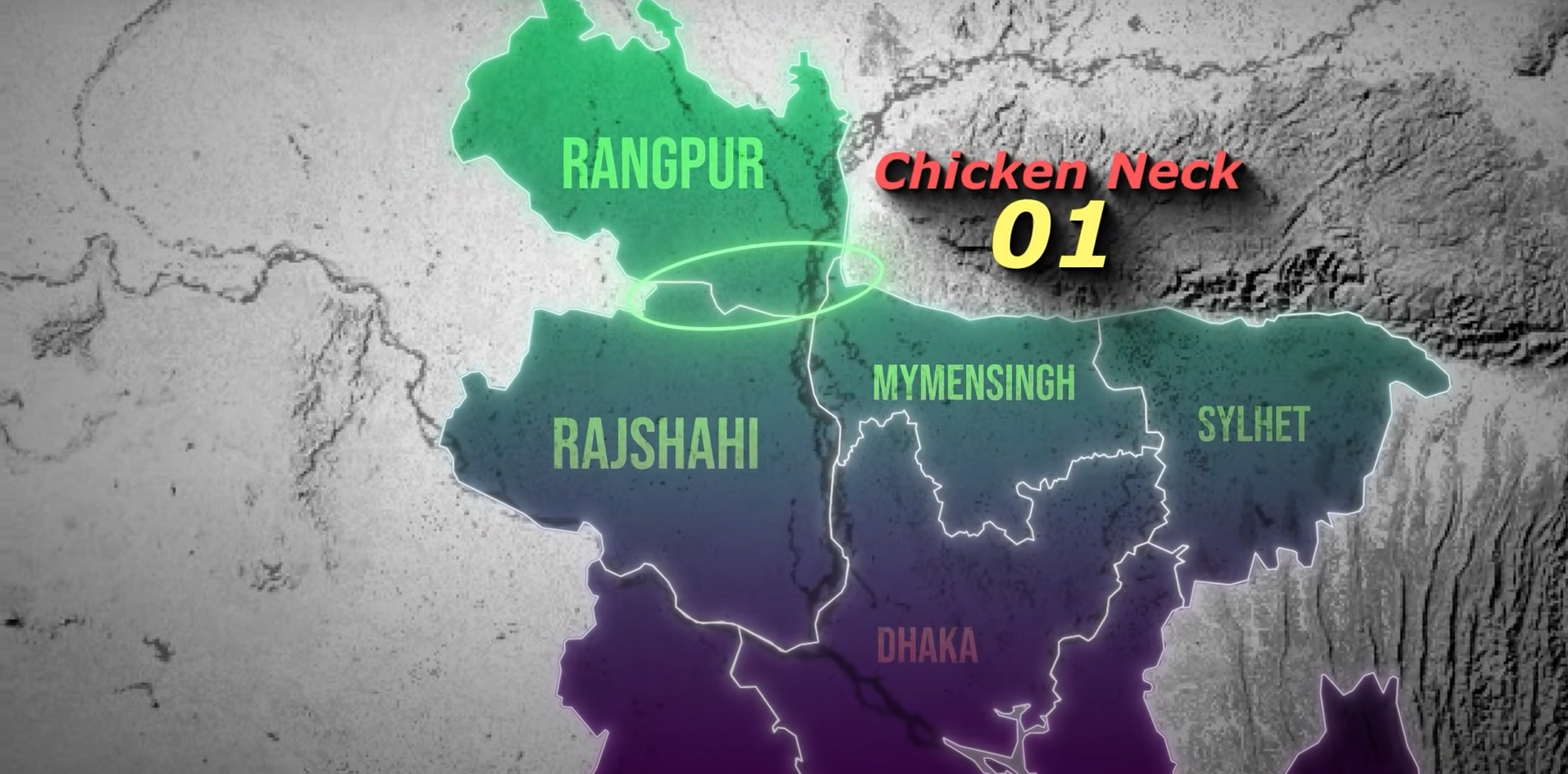
Bangladesh’s Rangpur Division is a chicken’s neck. If India wants, it can slash through and conquer the entire territory. We can do it. Pakistan might resist and even threaten nuclear war. That would bring complications. But who will come to save Bangladesh? No one.
Then there’s Chittagong Division. If India sends an army and tanks there, what defense system does Bangladesh have? What air force? What can they do? Pakistan and China might claim, ‘You took over a small country’s territory — it’s wrong,’ etc. But for India, it would be an easy operation.
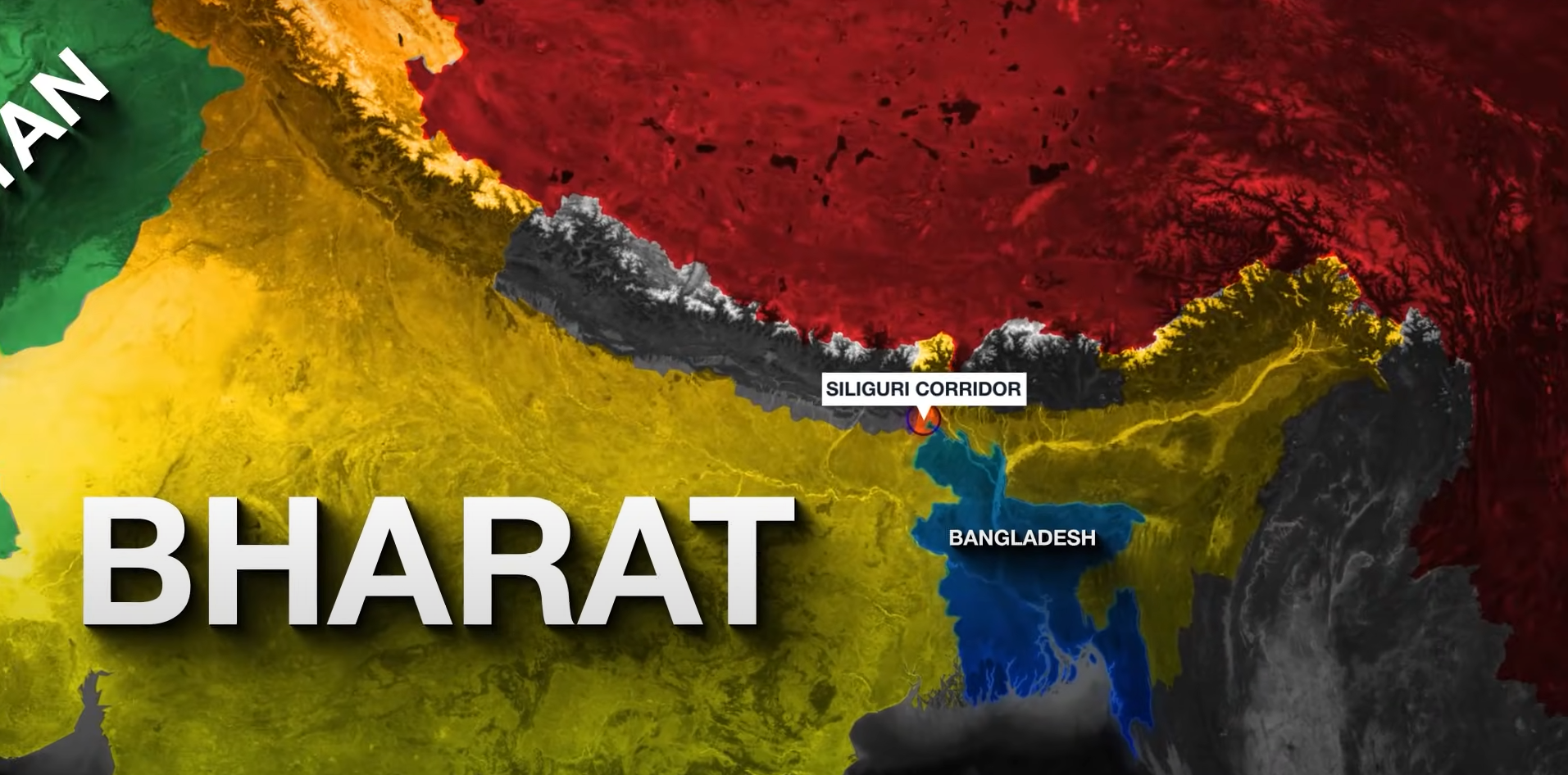
Sadly, I have to explain all this to Bangladesh. India doesn’t plan to attack. But when a much smaller country, with barely any military strength, starts planning things like Greater Bangladesh and three-front attacks — even reactivating terrorist groups that were banned before and increasing radicalization — then someone has to make the Bangladeshi public aware of the ugly truth so they take informed steps in the future.
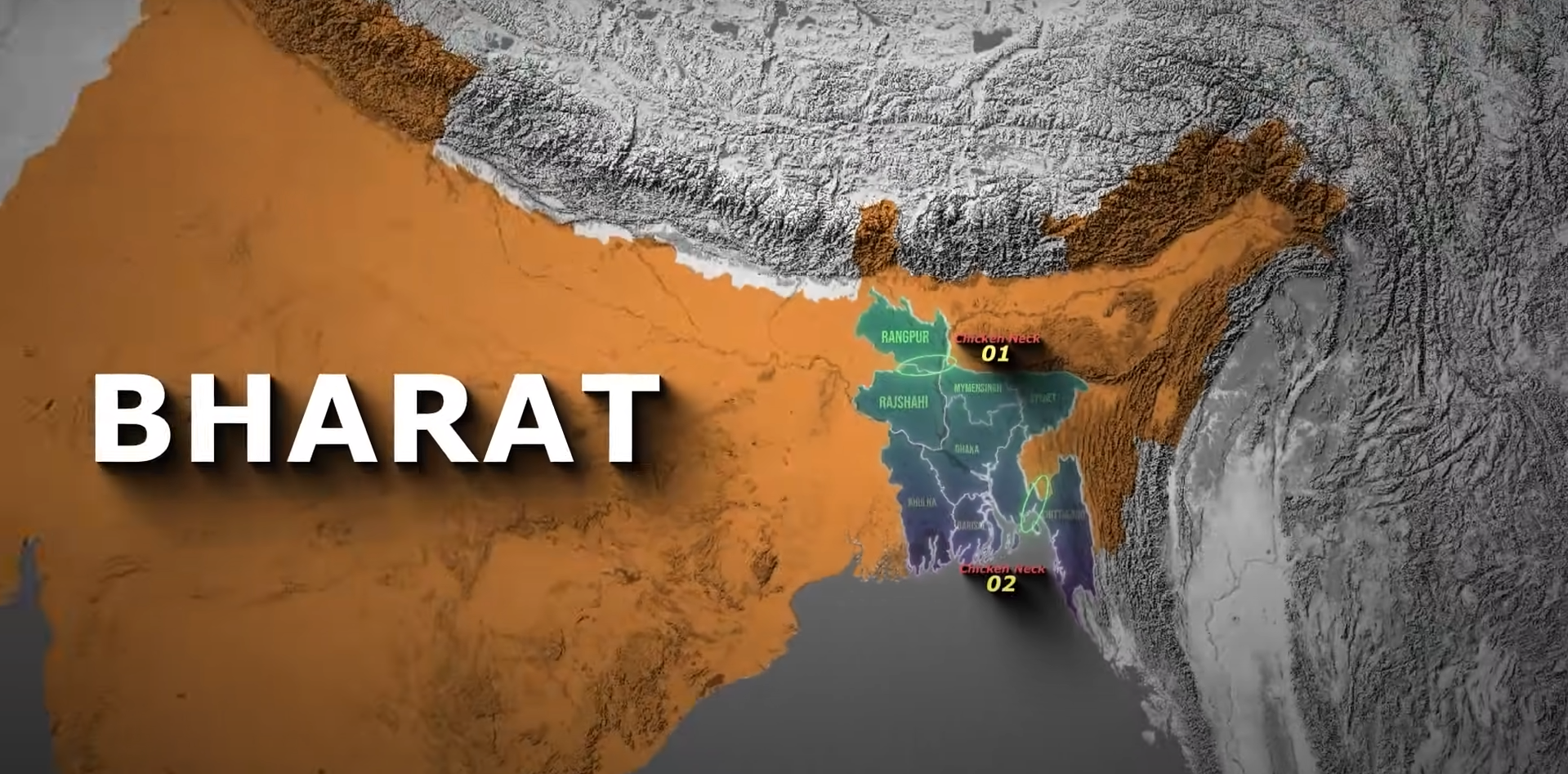
Unfortunately, I have to say this: Under Mohammad Yunus, Bangladesh seems like it will only learn the hard way. That’s unfortunate. With Yunus planning to revive airfields and build up Bangladesh’s air force, it looks like Bangladesh is planning something big. It may take a few years, but they have big ambitions.
India, meanwhile, has also responded to Bangladesh’s restrictions on India. India is revoking various privileges India gave to Bangladesh, like using India’s land routes for exports, selling in Indian markets, trading electricity with Nepal and Bhutan, etc. Though India hasn’t removed all those privileges yet, India is still trying to repair relations with Bangladesh.
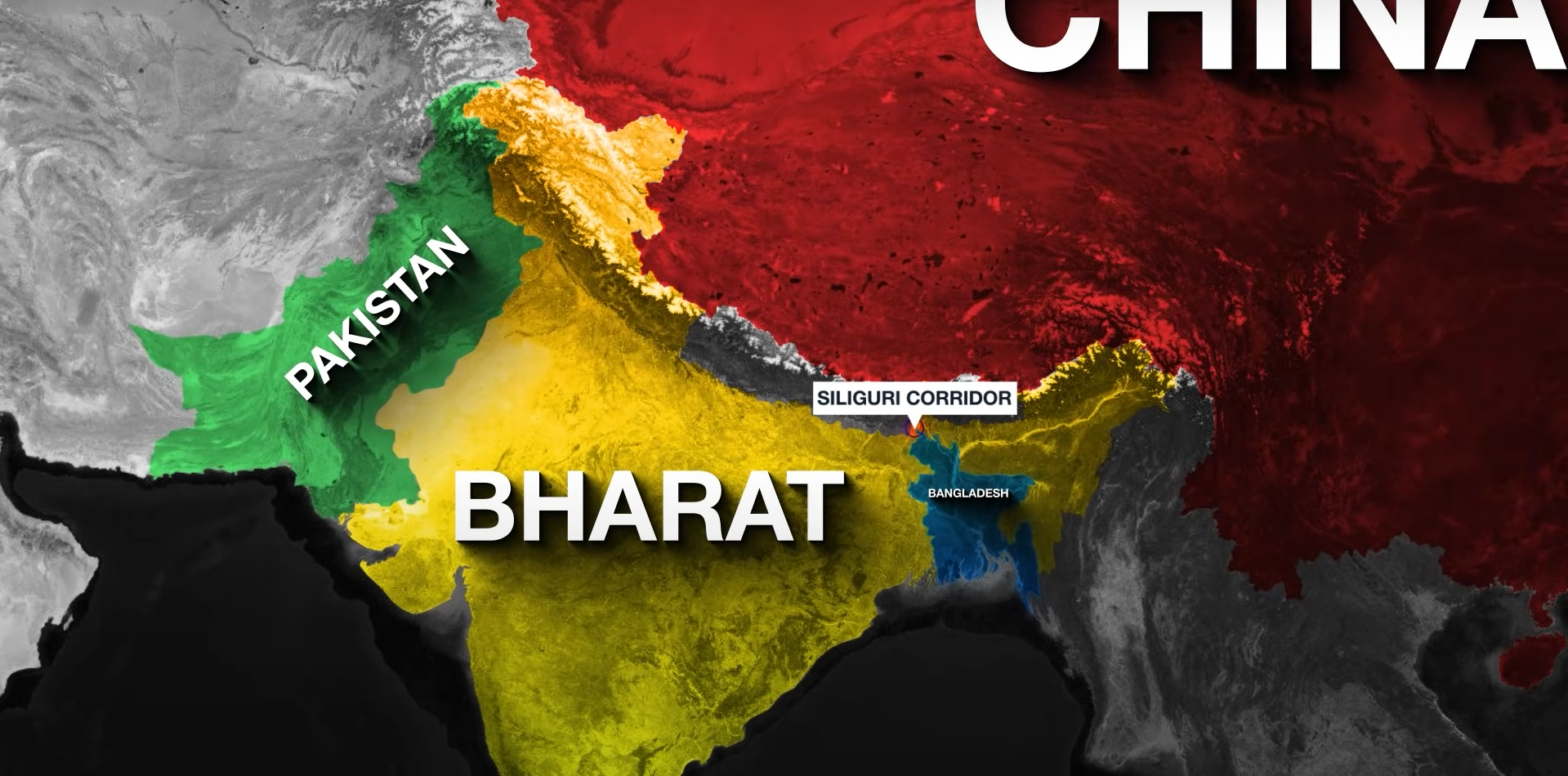
But if Bangladesh continues on this path, then unless a democratically elected government comes into power — unlike Mohammad Yunus, who wasn’t democratically elected and just appeared out of nowhere — then India may be forced to take difficult steps it never wanted to.
What’s strange is that people in Western countries who were celebrating Mohammad Yunus replacing Sheikh Hasina — those same people are now absolutely quiet. They’re not raising the fact that there haven’t been any elections in Bangladesh in a long time.
This is sad. And I think, as “China gets more involved in Bangladesh, India will eventually have to make tough choices.”

